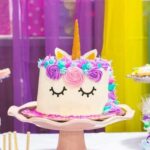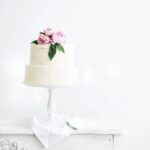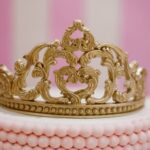Are you a beginner looking to learn how to decorate a sheet cake? Whether for a birthday, celebration, or just for fun, knowing how to add visual appeal to a simple sheet cake can take your baking skills to the next level.
In this article, we will explore the fundamental techniques and tips for decorating a sheet cake that are perfect for beginners. From choosing the right frosting to basic piping techniques and personalizing your cake with custom decorations, we’ve got you covered.
When it comes to decorating a sheet cake as a beginner, it’s important to start with the basics. Understanding the essential tools and ingredients needed, along with the different types of frosting and piping techniques available, will set you on the right path towards creating beautiful and delicious cakes. In this section, we will break down everything you need to know to get started on your journey into cake decorating.
As we delve into each aspect of decorating a sheet cake, we will provide step-by-step guides and tips tailored specifically for beginners. By the end of this article, you will have the knowledge and confidence to decorate a sheet cake like a pro. So, let’s roll up our sleeves and dive into the world of cake decorating.
Essential Tools and Ingredients
Decorating a sheet cake for beginners can be a fun and rewarding experience, but before you get started, it’s important to have the essential tools and ingredients on hand. To begin with, you will need a few basic tools such as an offset spatula, piping bags and tips, and a turntable for easy decorating. These items can typically be found at your local kitchen supply store or online.
In addition to tools, having the right ingredients is crucial for successful cake decorating. Make sure to have a good quality cake mix or your favorite homemade recipe, as well as plenty of frosting in the flavors of your choice. Food coloring gel can also come in handy for adding vibrant colors to your decorations.
Another important ingredient to keep in mind is any additional decorations or add-ons you might want to include on your sheet cake. Whether it’s sprinkles, edible flowers, or candy, these items can take your decoration to the next level and provide some added texture and visual appeal. Don’t forget about writing messages on the cake using piping gel or frosting.
Now that you have an idea of what you’ll need to get started, it’s time to gather your tools and ingredients so you can begin decorating your sheet cake like a pro.
| Essential Tools | Ingredients |
|---|---|
| Offset spatula | Cake mix/homemade recipe |
| Piping bags and tips | Frosting in various flavors |
| Turntable | Food coloring gel |
Choosing the Right Frosting
Buttercream Frosting
One of the most popular choices for decorating cakes, buttercream frosting is easy to work with and can be flavored and colored in countless ways. It has a smooth and creamy texture, making it ideal for basic piping techniques and creating simple designs and borders on your sheet cake.
Fondant
Fondant is a versatile frosting that can give your sheet cake a smooth and polished look. It can be rolled out and draped over the cake for a clean and professional finish. While fondant may seem intimidating for beginners, it offers a great blank canvas for more intricate decorations.
Cream Cheese Frosting
Cream cheese frosting is rich, tangy, and delicious, making it a great choice for carrot cakes or red velvet cakes. However, it may not hold up as well in warm temperatures, so consider this when choosing your frosting based on where the cake will be displayed or served.
By considering these different types of frosting and their properties, you’ll be able to make an informed decision on which one will best suit your sheet cake decorating needs as a beginner. Remember that practice makes perfect, so don’t be afraid to experiment with different frostings to find what works best for you.
Step-by-Step Guide to Leveling and Crumb Coating the Cake
Leveling and crumb coating a cake are essential steps in the decorating process, as they create a smooth and even surface for your frosting. Here’s a step-by-step guide to help beginners master these techniques.
First, ensure that your sheet cake is completely cooled before you start working on it. If the cake is still warm, the frosting may melt and make it challenging to achieve a clean finish. Once the cake has cooled, use a long serrated knife to carefully level the top of the cake. This will create an even surface for decorating and prevent your cake from being lopsided.
Next, prepare your crumb coat by applying a thin layer of frosting to the entire surface of the cake. The purpose of this initial layer is to seal in any loose crumbs, which will prevent them from mixing with the final layer of frosting. Use an offset spatula to spread the frosting evenly across the top and sides of the cake, ensuring that all areas are covered.
After applying the crumb coat, place the cake in the refrigerator for about 15-20 minutes to allow the frosting to set. Once the crumb coat has hardened slightly, you can then apply your final layer of frosting using the same technique. By following these steps, you’ll be able to achieve a professional-looking finish on your sheet cake, setting a solid foundation for further decorating.
Basic Piping Techniques
Piping techniques are an essential skill to learn when decorating a sheet cake, as they allow you to create simple designs and borders that can elevate the overall look of your cake. One of the most basic piping techniques is creating a border around the edges of the cake using a piping bag and a round tip. This simple technique can add a professional touch to your sheet cake and make it look more polished.
In addition to creating borders, piping can also be used to create simple designs on the surface of the cake. You can use different types of tips to achieve different effects, such as stars, rosettes, or zigzags. By practicing with different tips and experimenting with pressure and speed, you can create a variety of designs to personalize your sheet cake.
When using piping techniques, it’s important to have the right consistency of frosting. If the frosting is too stiff, it will be difficult to pipe smoothly, and if it’s too thin, it may not hold its shape. Beginners should practice with different consistencies until they find one that is easy to work with.
Keep in mind that mastering piping takes time and practice, so don’t get discouraged if your first attempts are not perfect. With patience and persistence, you will improve your piping skills and be able to create beautiful designs on your sheet cakes.
Adding Color and Texture
Types of Sprinkles
When it comes to adding color and texture to your sheet cake, sprinkles are a fantastic option. There are many different types of sprinkles to choose from, including jimmies, nonpareils, sanding sugar, and shaped sprinkles. Jimmies are the classic rod-shaped sprinkles that come in a variety of colors. Nonpareils are tiny round sprinkle balls that add a delicate pop of color.
Sanding sugar is larger granulated sugar crystals available in a wide range of hues. Shaped sprinkles include fun designs such as stars, hearts, and animals. Experiment with different types to add visual interest to your cake.
Using Edible Flowers
Edible flowers can be used to add both color and a unique touch to your sheet cake. Before using edible flowers on a cake, it’s important to ensure that they are safe for consumption and have not been treated with any chemicals. Popular edible flower options include pansies, violets, roses, and lavender.
Be sure to gently wash the flowers before use and remove any green parts or stems so that only the petals remain. Carefully place the flowers on top of your frosted sheet cake for an elegant and natural decoration.
Creative Use of Candy
Candy is another fun way to incorporate color and texture into your decorated sheet cake. From chocolate candies to gummy bears, the options are endless. You can strategically place candy around the border of the cake for a colorful border or create patterns using candy pieces on top of the frosting.
For example, you can arrange colorful M&M’s in the shape of a heart or write out celebratory messages with letter-shaped candies. Get creative with different types of candy to personalize your sheet cake even further.
Incorporating these colorful elements into your decorated sheet cakes will not only make them visually appealing but also add delightful flavor and texture combinations for all those who get to enjoy your creations.
Personalizing Your Cake
When it comes to personalizing a sheet cake, there are endless possibilities for adding messages and custom decorations that will make your creation truly special. Whether you’re celebrating a birthday, anniversary, or other special occasion, taking the time to personalize your cake will show the recipient just how much you care. Here are some tips and ideas for writing messages and adding custom decorations to your sheet cake:
- Choose the right tools: When it comes to writing messages on a cake, invest in some high-quality piping bags and tips. These will make it easier to write smoothly and precisely on the surface of your cake.
- Practice makes perfect: Before attempting to write directly onto your cake, practice piping out letters and words on a piece of parchment paper. This will help you get a feel for the pressure needed to create clean, even lines.
- Get creative with decorations: Consider adding personalized decorations that reflect the recipient’s interests or hobbies. For example, if they love gardening, you could use edible flowers to adorn the cake. If they’re a sports fan, incorporate small fondant or chocolate figurines representing their favorite team.
In addition to writing messages and incorporating custom decorations, it’s important to consider the overall visual impact of your personalized sheet cake. Take into account factors such as color palette, placement of decorations, and balance within the design. Your goal is to create a visually appealing and meaningful masterpiece that will delight both the eyes and taste buds of those who see and eat it.
Remember that personalizing a sheet cake is an opportunity for creativity and self-expression. Embrace the process and have fun with it. Whether you’re simply writing “Happy Birthday” or crafting intricate designs with edible embellishments, infusing your personal touch into every detail will make your decorated sheet cake truly unforgettable.
Troubleshooting
When it comes to decorating a sheet cake, there are some common mistakes that beginners often make. One of the most frequent errors is using too much frosting, which can result in a messy and unattractive appearance.
It’s important to apply a thin layer of frosting, known as a crumb coat, before adding the final layer to avoid this issue. Another mistake is not allowing the cake to cool completely before frosting it, which can cause the frosting to melt and slide off the cake.
Another common mistake is overmixing the frosting, which can lead to air bubbles and an uneven texture. It’s essential to mix the frosting just until it reaches a smooth and creamy consistency. Additionally, not leveling the cake before decorating can result in an uneven surface, making it challenging to achieve professional-looking results. Lastly, using stale or expired ingredients can also affect the taste and appearance of the cake.
How to Fix These Mistakes
To fix these common mistakes, there are several steps you can take. If you’ve used too much frosting, gently scrape off the excess with a spatula and apply a thin layer of fresh frosting on top.
If your frosting has developed air bubbles from overmixing, allow it to sit for a few minutes so that the bubbles can rise to the surface, then gently stir the frosting again. When dealing with an uneven cake surface, carefully trim any protruding areas with a sharp knife and add extra frosting as needed to level it out.
Additionally, if you suspect that your ingredients may be past their prime, consider starting over with fresh supplies. By being mindful of these common mistakes and knowing how to address them effectively, beginners can ensure that their decorated sheet cakes turn out beautifully every time.
| Common Mistakes | How to Fix Them |
|---|---|
| Using too much frosting | Gently scrape off excess and apply thin layer of fresh frosting |
| Not allowing cake to cool completely before frosting | Allow cake to cool fully before applying frosting |
| Overmixing the frosting | Allow air bubbles to rise and gently stir again; do not overmix |
| Not leveling the cake before decorating | Carefully trim protruding areas with sharp knife and add extra icing as needed |
Final Touches
After spending time decorating your sheet cake, it’s important to ensure that it is displayed and stored properly to maintain its appearance and flavor. If you plan to serve the cake at a later time, storing it correctly is essential to keep it fresh.
When displaying your decorated sheet cake, consider using a cake stand or platter that complements the design of the cake. This will not only showcase your creation but also make it more appealing to guests. Additionally, be mindful of where you place the cake to avoid direct sunlight or heat that can cause the frosting to melt or distort the decorations.
To store your decorated sheet cake, cover it with a cake dome or plastic wrap to protect it from dust and drying out. It’s best to keep it at room temperature if you plan to serve it within a day or two. For longer storage, consider placing the cake in an airtight container and refrigerating it.
Just be sure to bring the cake back to room temperature before serving to allow the flavors and texture to fully come through. By following these simple steps for displaying and storing your decorated sheet cake, you can ensure that all your hard work pays off when it comes time for serving.
Conclusion
In conclusion, decorating a sheet cake can seem daunting for beginners, but with the right tools and techniques, it can be an enjoyable and rewarding experience. By understanding the basics of cake decorating and choosing the right frosting, beginners can take their first steps in creating beautiful and delicious cakes. With a step-by-step guide to leveling, crumb coating, and basic piping techniques, beginners can learn how to create simple yet elegant designs and borders on their sheet cakes.
Furthermore, adding color and texture with sprinkles, edible flowers, and candy can bring a unique and personalized touch to a decorated sheet cake. Whether it’s writing messages or adding custom decorations, there are many ways to make a sheet cake truly your own. Additionally, troubleshooting common mistakes and learning how to fix them will help beginners improve their skills and confidence in decorating.
Lastly, celebrating your success in decorating a sheet cake is important. Displaying and storing the decorated cake properly will allow you to share your creation with others and enjoy the fruits of your labor. The key is to continue practicing and experimenting with different techniques in order to improve your cake decorating skills over time. So keep celebrating your successes while continuing to learn and grow as a beginner cake decorator.
Frequently Asked Questions
How Do You Dress a Sheet Cake?
Dressing a sheet cake can be done in various ways depending on your desired look and theme. You can start by trimming the edges of the cake to create smooth, straight lines.
Then, you can cover the entire surface with a layer of frosting, using a spatula to spread it evenly. For a simple yet elegant look, you can add some piping around the edges or create patterns using different colored frostings.
How to Decorate a Cake for Beginners?
Decorating a cake for beginners can be an enjoyable and creative process. Start by choosing your desired frosting and colors, then practice basic techniques like spreading frosting smoothly, creating simple borders, or writing messages with piping bags. You can also use fresh fruits, edible flowers, or sprinkles to add decorative elements without requiring advanced skills.
How Do You Make a Plain Cake Look Fancy?
Making a plain cake look fancy is all about adding some extra flair and creativity to its presentation. You can start by experimenting with different frosting techniques such as rosettes, swirls, or even ombre effects using multiple shades of frosting.
Adding layers of fruit, chocolate shavings, edible glitter, or caramel drizzles can also take your plain cake to the next level of sophistication and visual appeal. Remember that attention to detail and creativity are key when elevating the appearance of a plain cake.

Welcome to my blog about home and family. This blog is a place where I will share my thoughts, ideas, and experiences related to these important topics. I am a stay-at-home mom with two young children. I hope you enjoy reading it! and may find some helpful tips and ideas that will make your home and family life even better!





